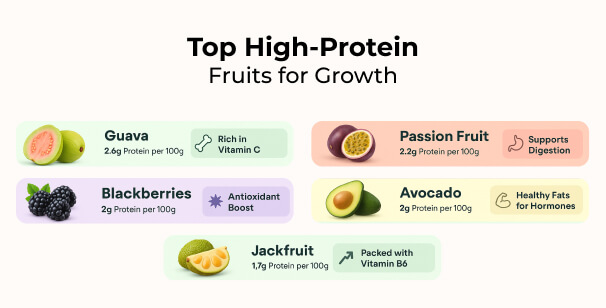Do you also think about whether there might be any secret to gaining a few inches extra in your height, even after your growing years are supposedly over? Well, this is one of the most common aspirations, and it even comes with ample myths and misconceptions about how we can influence our stature. From special diets to strict exercises to grow height, people often search for ways to appear taller. This leads us to explore two fascinating areas – spinal decompression and posture correction for taller appearance. Both of these concepts are typically discussed about height, promising a more elongated appearance.
However, spinal decompression height gain can indeed stretch to appear taller and even make efforts to restore your lost height. Still, it’s crucial to understand the fundamental truth that temporary height increase methods do not, and cannot, increase your bone length. Indeed, our height is determined by the length of our long bones, particularly the ones in our legs and spine.
Let’s have a detailed discussion of this matter in the blog below:
Understanding Human Height and Spinal Structure

Our total human height is a complex measurement, which is not measured simply by the length of any one single bone but is basically a cumulative sum that is determined by the three main components – the length of our bones, the structure of our spine, and even our posture. As discussed earlier, the bones of our legs particularly contribute to our height from the waist to down. Our posture plays a very keen role in how we present our height. Even with strong bones and a healthy spine, poor posture can make us look shorter by causing slouching and unnatural curves.
Can Height be Increased After Growth Plates Close?

This is one of the most common queries, and indeed a hope for many whether height can be increased once an individual reaches adulthood. To answer this, we must first look at the “growth plates”, which are also known as epiphyseal plates. These are the areas of cartilage located near the ends of the longer bones in children and adolescents.
During the growing spurt, cartilage cells within these plates continually divide and then get turned into bone cells, causing the bones to lengthen. Well, this is a process that is basically responsible for the significant increase in height experienced during childhood and puberty. Furthermore, as a person reaches skeletal maturity, typically in their late teens or even early twenties, such growth plates often harden and fuse completely into solid bones.
Once such a fusion occurs, the cartilage is then replaced entirely by bone, and then there is no longer any mechanism left for the bone to lengthen further. Hence, the equivocal answer here is that NO method, whether any kind of special exercises, diet, supplements, or any form of spinal decompression, can increase the actual length of your bones once your growth plates have closed. This biological window for bone lengthening simply shuts once skeletal maturity is reached. Any claims to the contrary are misleading.
What is Spinal Decompression?
One question that many wonder is that does spinal decompression increase height? Well, spinal decompression is basically a process of gently stretching the spine to alleviate the pressure on the intervertebral discs and also the surrounding nerves. Moreover, the fundamental goal is to create a negative pressure within the disc, encouraging bulging to retract, thereby reducing the pressure on nerve roots and regulating the movement of oxygen, nutrients, and fluids into the disc for healing and rehydration. This process can easily be achieved through various non-surgical techniques.
This method may not lengthen your bones, but it can restore lost disc height, improve spinal alignment, and help you regain your optimal height
There are several ways to achieve spinal decompression:
- Manual therapy, which is performed by chiropractors or physical therapists, often involves hands-on techniques to gently stretch and manipulate the spine, aiming to improve the alignment and reduce compression.
- Inversion therapy uses an inversion table to hang upside down, applying gravity-based traction along the spine. This controlled inversion helps to decompress the discs naturally.
- Mechanical spinal traction uses machines to apply a controlled stretch to the spinal column.
These methods help increase fluid, nutrient, and oxygen flow to the spinal discs, which can support disc rehydration and decompression.
Spinal Elongation Exercises
Well, indulging in various spinal elongation exercises that would encourage spine elongation is a cornerstone of improving overall spinal health and at the same time optimizing one’s perceived health. Such movements are often designed in order to stretch the vertebral column, creating space between the discs as well as to promote a better alignment. Here’s some popular spinal decompression exercises that anyone can do at their home.
1. Cat-Cow Stretch
Well, cat-cow stretch is a classic yoga pose that dynamically flexes and extends the spine, while also enhancing the flexibility and gently decompressing the discs.
2. Cobra Pose (Bhujangasana)
The Cobra pose, also known as Bhujanasana is another effective stretch for spinal extension. In this exercise, you would gently lift your chest off the floor, engaging your back muscles and also lengthening the front of the body, which can counteract slouching.
3. Child’s Pose (Balasana)
Child’s pose which is also known as Balasana offers a more gentle forward fold that helps in relieving the tension on the lower back and enables for a passive spinal decompression.
4. Hanging Bar Stretch (Passive Hang)
The hanging bar stretch is basically an exercise that simply involves hanging from an overhead bar, enabling gravity to gently pull the spine downwards, creating mild traction effect.
5. Wall Stretch (Spinal Extension on Wall)
Stand against a wall with your heels, back, and head touching. Raise your arms overhead and stretch upward while maintaining contact with the wall. This posture elongation improves spine alignment and shoulder mobility.
Conclusion
While both spinal decompression and posture correction can probably enhance your height appearance, they do not, and even cannot, lead to actual bone growth. This is because the bones in our body often stop lengthening once our growth plates close in early adulthood. Hence, such methods often work by optimizing the natural length of your spine through rehydrating discs, correcting the alignment, and then reclaiming the height you might have lost due to daily compression as well as poor habits.
FAQs
Spinal decompression may temporarily restore up to 1–2 cm (0.5–0.75 inches) in height lost due to spinal compression throughout the day.
Growth plates typically close between ages 18 and 25. After that, natural bone growth stops permanently.
Early morning is the best time, as the spine is naturally decomposed after a night’s sleep, reflecting your maximum daily height.
Yes, posture correctors can align your spine and shoulders, reducing slouching and making you appear taller and more upright.
Yes, prolonged poor posture can lead to spinal compression and curvature, resulting in a noticeable reduction in height with age.


